Average speed is the same as average velocity.
Correct! Speed is a scalar quantity that only has magnitude. Velocity has both a scalar quantity and a direction.
Incorrect. Speed is a scalar quantity that only has magnitude. Velocity has both a scalar quantity and a direction. The magnitude of speed and velocity might be the same, but it is better to think of them as two different quantities.
Displacement can be negative or positive.
Correct! If you assign a particular direction as the positive direction and the object is moving in the opposite direction, the result is a negative displacement.
Incorrect. Since displacement is a vector, it has both magnitude and direction. If you assign a particular direction as the positive direction and the object is moving in the opposite direction, the result is a negative displacement.
Acceleration can be defined as the change of velocity divided by the change in time.
Correct! Acceleration is the rate of change of velocity. By calculating how much the velocity of an object has changed in a certain amount of time, you can determine the acceleration of the object.
Incorrect. Acceleration is the rate of change of velocity. By calculating how much the velocity of an object has changed in a certain amount of time, you can determine the acceleration of the object.
Which of the following graphs represents a positive constant average velocity that is not zero?
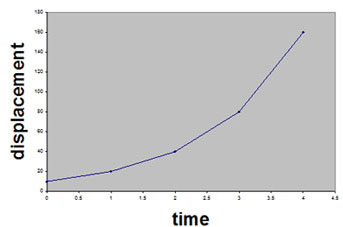
Incorrect. This graph indicates that displacement is getting larger per unit of time. This graph indicates acceleration rather than constant velocity. For you to have constant velocity, the displacement per unit of time cannot change.
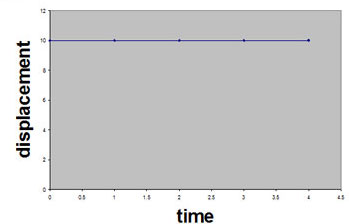
Incorrect. While the straight line does indicate constant velocity, since the displacement does not change during each time interval, the velocity is zero.
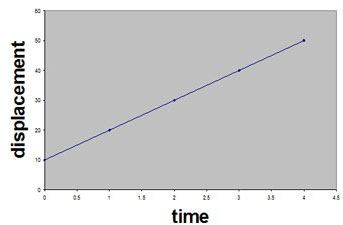
Correct! For each unit of time that goes by, the same amount of displacement is experienced. This situation reflects constant non-zero velocity.
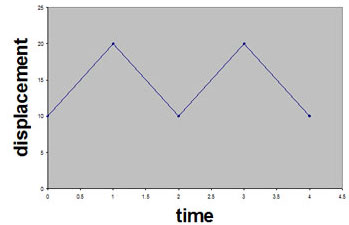
Incorrect. This graph indicates that the object is alternating between motion in the positive and negative directions. Since the object’s displacement at the end equals its displacement at the beginning, the overall displacement is zero, which makes the average velocity zero.
Which of the following graphs represents positive acceleration?
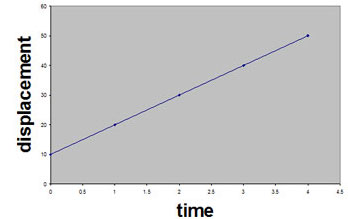
Incorrect. This graph indicates a constant average velocity since the displacement changes the same amount per unit of time. This corresponds to zero acceleration since there is no change of velocity over the time interval.
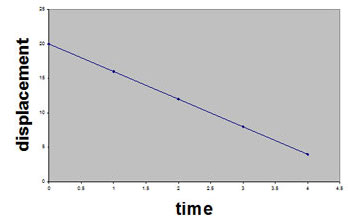
Incorrect. This graph indicates constant negative average velocity, which corresponds to zero acceleration. Since the displacement change by the same amount per unit of time, the velocity is constant. Since there is no change in the velocity over the time interval, the acceleration is zero.
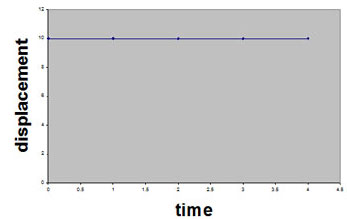
Incorrect. This graph indicates that the displacement is not changing per unit of time. This indicates a zero velocity. If the velocity is always zero, then the acceleration is also zero since there is no change in velocity over the time interval.
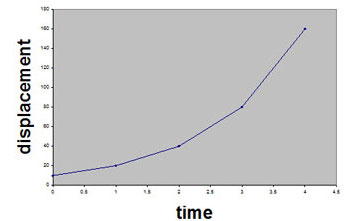
Correct! Notice that the displacement is larger per unit of time as the object moves. This indicates a change in velocity, which gives you a non-zero acceleration. If the velocity changes over the time interval, then you have acceleration.







